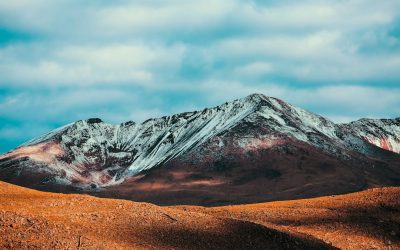Exploring the Beauty of Canada: A Journey through the Land of Maple Leaves
Canada, the second-largest country in the world, is known for its stunning natural landscapes, vibrant cities, and rich cultural heritage. Located in North America, Canada is bordered by the Atlantic Ocean to the east, the Pacific Ocean to the west, and the Arctic...
Discovering the Hidden Gems of Burkina Faso: Exploring the Rich Culture and Natural Beauty of West Africa
Burkina Faso, a landlocked country in West Africa, is often overlooked by travelers in favor of its more well-known neighbors. However, this hidden gem has much to offer for those willing to explore its rich cultural heritage, natural beauty, vibrant music and dance...
Exploring the Vibrant Culture and Breathtaking Landscapes of Cameroon
Cameroon, located in Central Africa, is a country known for its rich cultural heritage, stunning landscapes, and warm hospitality. It is bordered by Nigeria to the west, Chad to the northeast, the Central African Republic to the east, and Equatorial Guinea, Gabon, and...
Discovering the Hidden Gems of Cambodia: A British Traveller’s Insightful Journey
Cambodia, a country located in Southeast Asia, is a land of rich history, vibrant culture, and breathtaking landscapes. From its ancient temples to its bustling cities, Cambodia offers a unique and unforgettable travel experience. In recent years, Cambodia has become...
Discover the Hidden Gems of Cabo Verde: A Journey Through the Enchanting Archipelago
Cabo Verde, also known as Cape Verde, is a hidden gem located off the coast of West Africa. This enchanting archipelago consists of ten islands and five islets, each offering its own unique beauty and charm. With its pristine beaches, rich history and culture,...
Discovering the Hidden Gems of Bulgaria: A Journey through its Rich Culture and History
Bulgaria, located in Southeastern Europe, is a hidden gem when it comes to travel destinations. With its rich history, vibrant art and music scene, unique cuisine, stunning natural landscapes, folklore and traditions, Orthodox Christian heritage, warm hospitality,...
Discovering the Hidden Gems of Brunei: A Journey Through Southeast Asia’s Best Kept Secret
Brunei, a small country located on the island of Borneo in Southeast Asia, is often overlooked by travelers in favor of its more popular neighbors like Malaysia and Indonesia. However, this hidden gem has much to offer visitors who are willing to venture off the...
Exploring the Vibrant Culture and Breathtaking Landscapes of Brazil
Brazil is a country known for its vibrant culture, rich history, and diverse landscapes. From the bustling streets of Rio de Janeiro to the vast Amazon Rainforest, Brazil offers a unique and unforgettable experience for travelers. In this blog post, we will take a...
Discovering the Untouched Beauty of Botswana: A Journey Through the Heart of Africa
Botswana, located in Southern Africa, is a hidden gem that offers travelers a unique and unforgettable experience. With its vast landscapes, diverse wildlife, and rich cultural heritage, Botswana is a destination that should be on every traveler’s bucket list....
Discovering the Hidden Gems of Bosnia and Herzegovina: A Journey Through its Rich Culture and Natural Wonders
Bosnia and Herzegovina, located in the heart of the Balkan Peninsula, is a hidden gem for travelers seeking an authentic and off-the-beaten-path experience. This small country is rich in history, culture, and natural beauty, making it a perfect destination for those...
Discovering the Wonders of Bolivia: A Journey Through South America’s Hidden Gem
Bolivia, located in the heart of South America, is a country known for its unique and diverse landscape. From the towering peaks of the Andes Mountains to the vast expanse of the Amazon rainforest, Bolivia offers a breathtaking array of natural wonders. Its topography...
Discovering the Hidden Gems of Bhutan: A Journey Through the Land of the Thunder Dragon
Nestled in the eastern Himalayas, Bhutan is a small landlocked country known for its breathtaking landscapes, rich cultural heritage, and unique approach to measuring progress. Bhutan is often referred to as the Land of the Thunder Dragon due to its dramatic...











